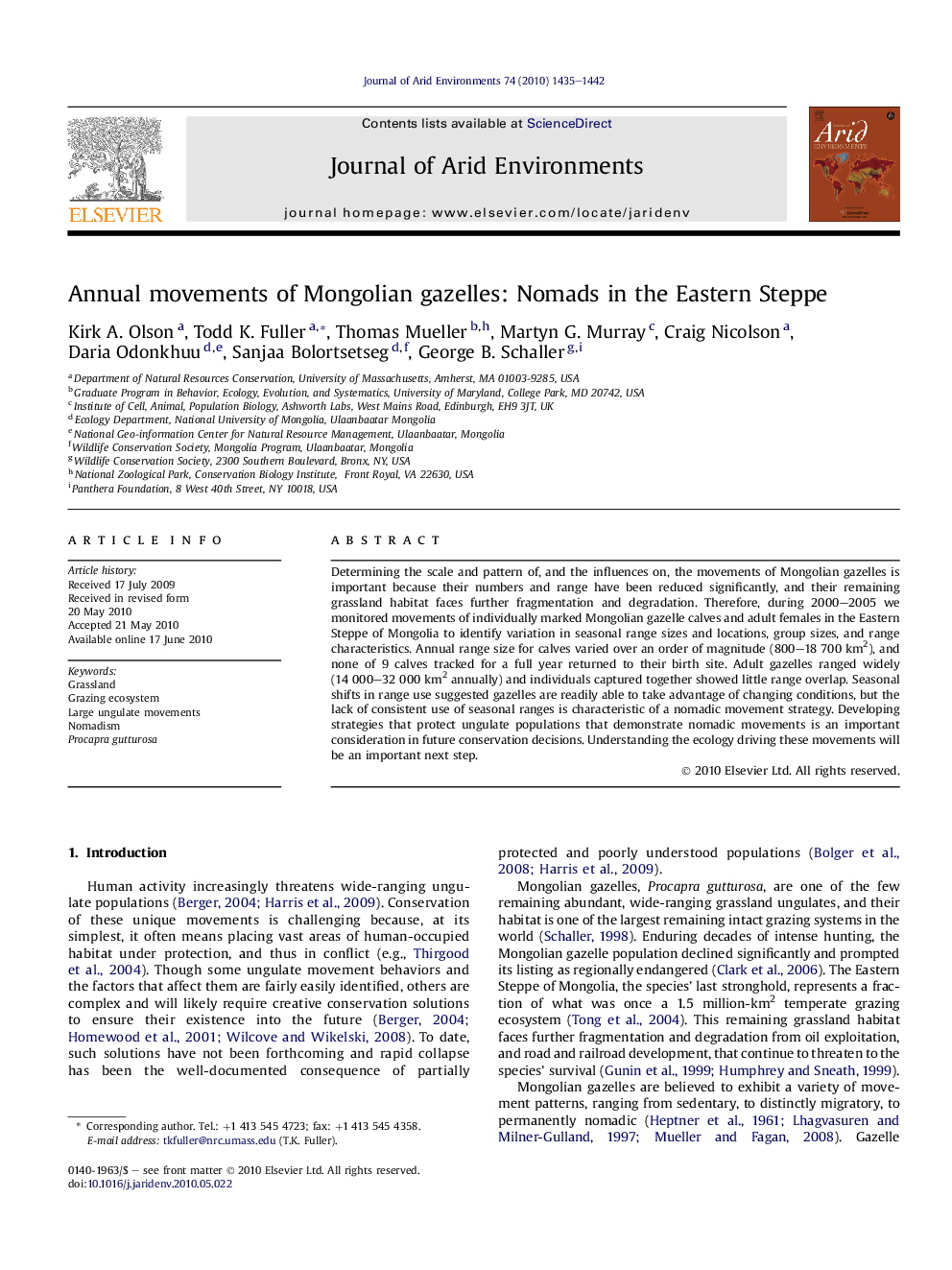| Article ID | Journal | Published Year | Pages | File Type |
|---|---|---|---|---|
| 4393701 | Journal of Arid Environments | 2010 | 8 Pages |
Determining the scale and pattern of, and the influences on, the movements of Mongolian gazelles is important because their numbers and range have been reduced significantly, and their remaining grassland habitat faces further fragmentation and degradation. Therefore, during 2000–2005 we monitored movements of individually marked Mongolian gazelle calves and adult females in the Eastern Steppe of Mongolia to identify variation in seasonal range sizes and locations, group sizes, and range characteristics. Annual range size for calves varied over an order of magnitude (800–18 700 km2), and none of 9 calves tracked for a full year returned to their birth site. Adult gazelles ranged widely (14 000–32 000 km2 annually) and individuals captured together showed little range overlap. Seasonal shifts in range use suggested gazelles are readily able to take advantage of changing conditions, but the lack of consistent use of seasonal ranges is characteristic of a nomadic movement strategy. Developing strategies that protect ungulate populations that demonstrate nomadic movements is an important consideration in future conservation decisions. Understanding the ecology driving these movements will be an important next step.
